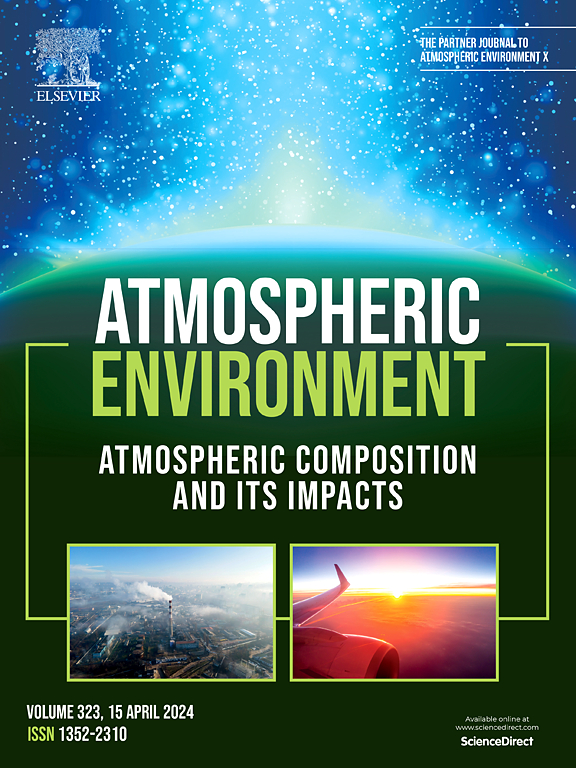Cumulative exposure to the chemical components of PM2.5 and the prevalence of Anemia: Insights from a large group of workers in South China
IF 3.7
2区 环境科学与生态学
Q2 ENVIRONMENTAL SCIENCES
引用次数: 0
Abstract
Although the association between PM2.5 and anemia is biologically plausible, involving the iron regulation disruption by chronic systemic inflammation following particle exposure, existing epidemiological evidence is limited, especially among workers or considering particle components.
We selected 372,290 workers in Guangdong Province in 2020 and used the yearly PM2.5 concentrations and its chemical components’ annual concentrations around their workplaces as the exposure. We employed the use of mixed-effects models to assess the associations of PM2.5 and its components with hemoglobin and anemia, further investigating the interaction between stratified variables (demographic characteristics and occupational variables) and the five components on anemia.
For each interquartile range increase in the concentration of PM2.5 and its components (BC, NH4+, NO3-, SO42-, OM), the hemoglobin concentration decreased by 0.993 (95 %CI: 0.927, 1.059), 0.747 (0.681, 0.812), 0.939 (0.871, 1.007), 1.237 (1.167, 1.306), 0.982 (0.916, 1.047), and 0.798 (0.735, 0.862) g/L, respectively. Except for BC, PM2.5 and the other components were associated with a significant increase in the prevalence of anemia, with ORs ranging from 3.0 % to 14.8 % per IQR increase in the exposure. NO3- had the most significant effect on both outcomes. In addition, we found that interactions between stratifying variables and concentrations of the five components were predominantly significant for the prevalence of anemia (P for interaction <0.05), with different susceptibilities observed across age groups, genders, and subgroups of occupational variables.
The study offers an in-depth examination of the potential impact of PM2.5 and its components on the prevalence of anemia among workers.
PM2.5化学成分的累积暴露与贫血患病率:来自中国南方一大群工人的见解
虽然PM2.5与贫血之间的联系在生物学上是合理的,涉及颗粒暴露后慢性全身炎症对铁调节的破坏,但现有的流行病学证据有限,特别是在工人中或考虑颗粒成分时。我们选取了广东省2020年372290名工人,并以其工作场所周围PM2.5年浓度及其化学成分年浓度作为暴露量。我们使用混合效应模型来评估PM2.5及其成分与血红蛋白和贫血的关系,进一步研究分层变量(人口统计学特征和职业变量)与贫血的五个成分之间的相互作用。PM2.5及其组分(BC、NH4+、NO3-、SO42-、OM)浓度每增加一个四分位数范围,血红蛋白浓度分别下降0.993 (95% CI: 0.927, 1.059)、0.747(0.681,0.812)、0.939(0.871,1.007)、1.237(1.167,1.306)、0.982(0.916,1.047)、0.798 (0.735,0.862)g/L。除BC外,PM2.5和其他成分与贫血患病率的显著增加有关,暴露每增加1 IQR的or为3.0%至14.8%。NO3-对两种结果的影响最为显著。此外,我们发现分层变量和五种成分浓度之间的相互作用对贫血的患病率显著(P为相互作用<;0.05),不同年龄组、性别和职业变量亚组的易感性不同。该研究深入探讨了PM2.5及其成分对工人贫血患病率的潜在影响。
本文章由计算机程序翻译,如有差异,请以英文原文为准。
求助全文
约1分钟内获得全文
求助全文
来源期刊

Atmospheric Environment
环境科学-环境科学
CiteScore
9.40
自引率
8.00%
发文量
458
审稿时长
53 days
期刊介绍:
Atmospheric Environment has an open access mirror journal Atmospheric Environment: X, sharing the same aims and scope, editorial team, submission system and rigorous peer review.
Atmospheric Environment is the international journal for scientists in different disciplines related to atmospheric composition and its impacts. The journal publishes scientific articles with atmospheric relevance of emissions and depositions of gaseous and particulate compounds, chemical processes and physical effects in the atmosphere, as well as impacts of the changing atmospheric composition on human health, air quality, climate change, and ecosystems.
 求助内容:
求助内容: 应助结果提醒方式:
应助结果提醒方式:


